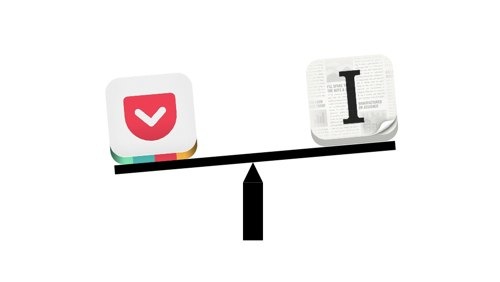
Recent history is replete with tech companies competing for our hearts, minds, and wallets. Ultimately, competition is good for consumers, but only if we set aside our loyalties and choose the better product. I recently decided to weigh up alternative read-later services. First, let me describe what they are and why I use them.
Several years ago I was frustrated with the bloated and disorganised state of my bookmarks folder. I was constantly bookmarking sites that I intended to read later. At a loss, I literally Googled ‘read web page later’, to see whether anyone had devised a compelling solution. The first hit was a site called, promisingly, Read it Later. It was perfect: you saved a link using a bookmarklet (a javascript snippet that you save as a bookmark), and then you logged in later and retrieved your list of articles. The second hit was a site called Instapaper, which didn’t sound promising, but upon further investigation, Instapaper seemed to work in much the same way. The Instapaper website looked appalling, though, so I opted for Read it Later.
Later I bought an iPhone, and although I had owned several prior smartphones, this was the first time I could competently browse the web on a mobile device. Reading long-form content on an iPhone was still unpleasant however, so I wanted to save interesting links to read on my computer. Unfortunately, the RSS client I was using on my phone (Pulse), supported Instapaper, but not Read it Later. I emailed Pulse requesting the feature, to no avail. I reluctantly switched to Instapaper, but eventually decided to just star interesting items in my Google Reader feed (using a browser extension Feedly to send articles to Google Reader).
A couple of years later I bought an iPad; suddenly reading on my computer seemed unpleasant. Around the same time, I stumbled upon the podcast of Instapaper founder Marco Arment, Build and Analyze. He seemed like a nice guy, and when he explained some of the decisions he made building Instapaper, I realised that I had been using it completely wrong. He had designed an iPhone app to read articles offline during his commute. The website didn’t even feature in his process, hence the lacklustre design. When I started using the Instapaper iPad app, I finally understood what all the fuss had been about. Instapaper really was a great way to read content: the websites were stripped of ads and served up as beautifully formatted, distraction free text. I have been a happy Instapaper user now for many months. But it seems read-later services are such a good idea that many companies are now entering the fray, notably Evernote and Readability.
Recently, Read it Later went through a complete product overhaul, relaunching with a new website, iPhone app, iPad app, and now a Mac app, and rebranding themselves Pocket. The new Pocket apps are beautiful, rock solid, and also let you watch videos distraction free. Marco hasn’t released a major update in response, and recently launched an unrelated magazine app. He seems competent enough to manage two apps simultaneously, but I have a niggling suspicion that competition may get the better of him.
With websites like The Verge now doing great video reviews of gadgets that I want to save for Sunday mornings, and my growing sense of entitlement that everything should be available and awesome on all of my devices, I have decided to set aside my loyalties and switch to Pocket as my read-later service of choice 1. So far I have no regrets, but one of the greatest advantages of living in the 21st century is that something better may come along tomorrow.
Although I have a PhD, I am not a practicing digital professional. Please consult your family nerd and/or trusted technologist before making any changes to your digital diet. ↩